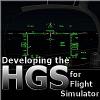
Sign in to follow this
Followers
0

Glide Slope Formula
By
javfn, in FSX/FSX-SE Aircraft and Panel Design Forum - How To


By
javfn, in FSX/FSX-SE Aircraft and Panel Design Forum - How To